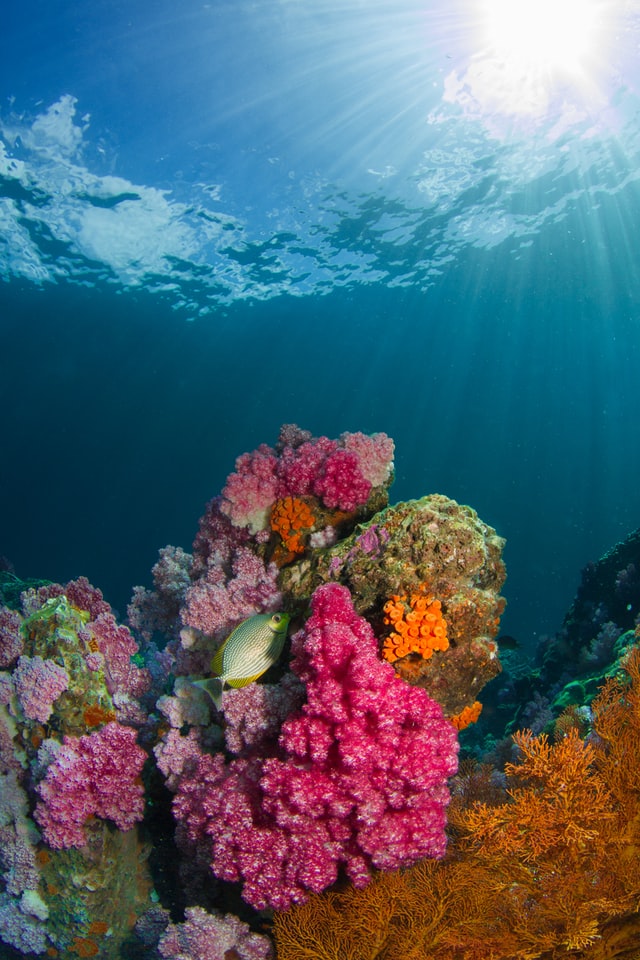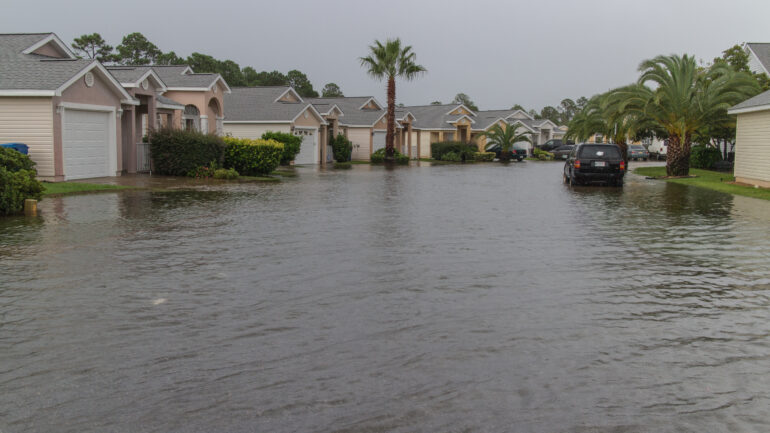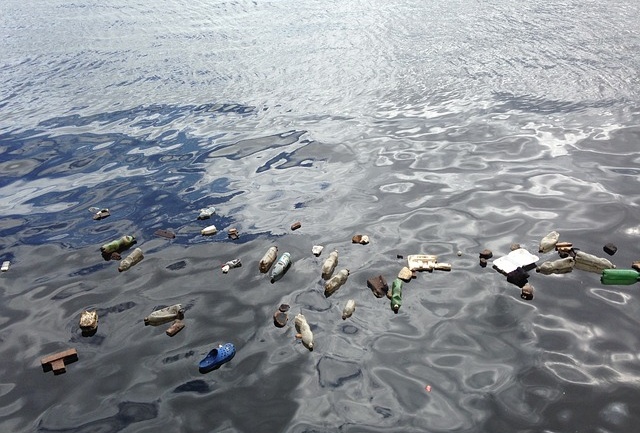Written by Albert Su, Staff Writer for Save The Water™ | February 20th, 2018
While it is well acknowledged that climate change is a result of carbon pollution, ocean acidification is another vast carbon problem that will prove to catastrophize the ocean ecosystem if it is not taken care of.
Introduction to Ocean Acidification
What exactly is ocean acidification? It is the decrease of the pH of ocean waters caused by the change of carbon levels in the atmosphere. Earth’s seas initially take in around 25 to 30 percent of our CO2 emissions and much more accumulates over time. The ocean surface pH level was at 8.2 before the beginnings of the Industrial Revolution; now, it has decreased by 0.1.2
Though seeming miniscule, ocean acidification has increased by 26 percent.2 This change has happened naturally over the course of 5,000 to 10,000 years during the planet’s history. However, due to human-aided carbon emissions, we have managed to accomplish this in less than a century.1
If one adds this to complications in areas like plastic pollution, overfishing, dead zones created through human means, global warming that bleaches coral reefs, and threats made to the livelihood of cold water species, overall, one can see the numerous amounts of toxic changes happening to ocean life presently.
Acidification by dissolving carbon dioxide creates carbonic acid, which limits the number of carbonate ions present in ocean waters. While ocean chemists desire for calcium carbonate sediments on the seafloor to dissolute back into the environment, counteracting the change in pH, it has not occurred at a rate as rapid as ocean acidification.1
Biological Impacts: Growth and Development
How is acidification affecting ocean life?
The decrease of carbonate ions available in the seas will first negatively impact crustaceans and organisms with calcified shelters, limiting their protection against damage or predators.1 This will affect the growth and development of younger species, making each generation more susceptible to an acidic sea.
Moreover, acidification does not single out species that need to form shells or other calcified shelters, but any ocean life could experience negative repercussions. A few laboratory studies have shown that the increased pH makes it hard for clownfish to sense their predators and for sharks to hunt their prey.5
Biological Impacts: Metabolic function and more
In addition to senses, the metabolic functions of all marine animals are threatened, as many are fine-tuned to narrow internal pH ranges.1 Extra stress caused by acidification could make deep-sea organisms suffer drastically due to their adaptation to a profoundly stable environment.1 While some oceanic species may be able to withstand this change, they would spend an abnormal amount of energy and time attempting to sustain their internal conditions. Not to mention, the progression of acidification will not rest for these species and allow them enough time to recover.
Ocean acidification could wreak havoc on the lifespans of many sea inhabiting species with side effects; for example, scientists discovered that by 2100, the body size of Atlantic cod residing within the Baltic and Barents Sea could be minimized to one-fourth of their present body size.3 The indirect impact of acidification means the negative influence on certain species that are not directly affected, happen through changes in habitat or in the food web.2 It could be harder for certain species to find adequate amounts of well-developed prey or, due to their many vulnerabilities in a calcified structure, their prey may be hunted too much in one area leading to extinction.
Socioeconomic Impacts
It is safe to say that the decreases in abundance of certain fish and marine life will certainly have harmful results on protein supply and food security of millions of people. This manipulation of the marine food web will lead to drastic changes in commercial fish stocks. That being said, it should be clear that ocean acidification has the potential to disrupt a multi-billion dollar fishing industry.6
Take the situation in the Gulf of Mexico, where nutrient pollution from runoff, along with carbon pollution, is acidifying waters far faster than anticipated, putting the $10 billion dollar fishing industry at risk. Add on the fact of acidifying cold waters in Alaska that not only threatens half of the seafood input to the United States but also endangers 70,000 jobs.5
Coastal communities and economies will be affected by the impact on oyster hatcheries to coral reefs. Coral reefs supply fish with habitats and billions t of tourism dollars, which also protect shorelines from erosion, and provide biodiversity in ocean life.6 Without healthy coral reefs, as they are eaten away from ocean acidification, coastal communities lack the means to generate tourist dollars and protection of coastal infrastructure as well as a sustainable ocean food web, leading to a downward spiral situation with no return.
Realistic Solutions to Acidification
As ocean acidification will cost the world economy more than $1 trillion, annually, one must wonder what are realistic and timely solutions to solving the crisis of ocean acidification?7
The first, most simple way to do this is the same way to combatting climate change. Simply reduce one’s carbon footprint. This could be by a plethora of means: conserving water, recycling, reusing, reducing, buying less stuff, reduce driving by carpooling, etc. Carbon pollution needs to be reduced by using more renewable energy and burning fewer fossil fuels. Nitrogen runoff exaggerates the problem, so instead, one could practice organic gardening techniques and purchase sustainably grown food.5
Studies for the Solution
A study by Oregon State University marine ecologist George Waldbusser found that baby oysters were protected from the acid in water which allowed them to grow by a bed eelgrass that swallowed up plentiful amounts of carbon dioxide. Another finding comes from Derek Manzello, who manages a long-term ocean acidification monitoring site at Cheeca Rocks in the Florida Keys. Working as part of the National Oceanic and Atmospheric Administration (NOAA), he has found that the coral there is thriving where it should have died long ago, because of the growth of nearby seagrass beds, which photosynthesize and suck up carbon dioxide, the coral has been able to survive.4
Both these cases demonstrate the vitality of geoengineering through growing sea plants that would help many coastal environments save their biodiversity by taking away the continually growing amounts of carbon dioxide in coastal waters. In fact, researchers are soon planning a large-scale project that would grow and harvest kelp to saturate the carbon dioxide from the ecosystem and use the excess dried kelp as fertilizer or food to benefit the economic diversity of coastal communities.4
Coastal industries have also found a way to combat ocean acidification. By monitoring their surrounding ocean waters, West Coast oyster hatcheries have learned to turn off their intake valves when acidic ocean water upwells along the coast. Individually, you can combat ocean acidification by contacting your policymakers and let them know you want the problem of ocean acidification addressed through money and research.5
References
- Barry, Peter G. Brewer James. “Rising Acidity in the Ocean: The Other CO 2 Problem.”Scientific American, Scientific American, 1 Sept. 2008, Retrieved from www.scientificamerican.com/article/rising-acidity-in-the-ocean/.
- Harrabin, Roger. “More Acidic Oceans ‘Will Affect All Sea Life’.” BBC News, BBC, 23 Oct. 2017, Retrieved from www.bbc.com/news/science-environment-41653511.
- Harvey, Fiona. “Ocean Acidification Is Deadly Threat to Marine Life, Finds Eight-Year Study.”The Guardian, Guardian News and Media, 23 Oct. 2017, Retrieved from www.theguardian.com/environment/2017/oct/23/ocean-acidification-deadly-threat-to-marine-life-finds-eight-year-study.
- “How Growing Sea Plants Can Help Slow Ocean Acidification.” Yale E360, Yale E360, 12 July 2016, Retrieved from e360.yale.edu/features/kelp_seagrass_slow_ocean_acidification_netarts.
- Ireland, Perrin. “What You Need to Know About Ocean Acidification.” NRDC, NRDC, 8 Aug. 2017, www.nrdc.org/stories/what-you-need-know-about-ocean-acidification.
- “Socioeconomic Impacts of Ocean Acidification.” Reef Resilience, Reef Resilience, Retrieved from http://bit.ly/2cXXVob
- Bradbury, Danny. “Ocean Acidification Will Cost Global Economy $1 Trillion by 2100.”GreenBiz, GreenBiz Group Inc., 9 Oct. 2014, www.greenbiz.com/blog/2014/10/09/ocean-acidification-cost-global-economy-1-trillion-2100.
- “National Science Foundation – Where Discoveries Begin.” Ocean Acidification, NSF – National Science Foundation, www.nsf.gov/news/news_images.jsp?cntn_id=125523&org=NSF.





